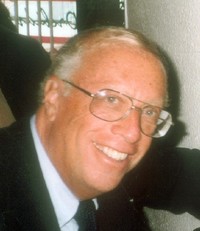By Rabbi Dr. Israel Drazin

BOCA RATON, Florida — It should surprise no one that there are multiple examples of similar events in the Bible and former ancient documents, such as an early tale of the flood written long before the story of Noah, because as Solomon wrote, “There is nothing new under the sun,” and humans are humans with the same desires, emotions, and fears.
In 1969, Theodore H. Gaster (1906-1992) published his last book, Myth, Legend, and Custom in the Old Testament. This 899-page volume contains multiple examples of comparisons.
Gaster was brilliant. He is said to have known 32 languages. He was unafraid of thinking outside the box. He was a British-born American scholar who was the son of Britain’s Sephardi chief rabbi. He received well-deserved praise for his many books on religion, the Bible, ritual, myths, the Dead Sea Scrolls, and more. He is well-known and praised for his one-volume abridgement of James Frazier’s important classic 13-volume work, The Golden Bough (1959). Earlier, in 1953, he published Festivals of the Jewish Year: A Modern Interpretation and Guide. It was updated in 1961. It is about the Jewish festivals and the Sabbath, their description, origin, and comparison to other ancient festivals. He notes in that book the comparisons between Jewish holidays and those in ancient cultures. He discusses how Judaism transformed ancient festivals, about the three seasonal festivals, New Year and Yom Kippur, the four fasts, three minor holidays, and the Sabbath.
This 1969 volume is based on Dr. Gaster’s 17,000 card files which compares the biblical events with those in ancient documents of ancient cultures. He does so by following the scriptural order: Genesis, Exodus, Leviticus, etc. through the Former Prophets and Ketuvim (Holy Writings), all the biblical books.
We read, for example, how the Bible and documents of ancient cultures had similar stories about the separation of heaven and earth, the notion that water preceded all things, God seeing that all is good, man formed from earth or clay, woman formed from man’s rib, the earthly paradise, the location of paradise in the east, the tree of good and evil, a special food forbidden to mortals, the mark of Cain, scaling heaven, the confusion of tongues, the pillar of salt, a man like Abraham entertaining angels, Jacob stealing the blessing, Jacob’s wedding, Jacob’s thigh being strained in a struggle, Potiphar’s wife, Rachel stealing teraphim, Reuben and the mandrakes, Jacob’s last words, the Burning Bush, the passage through the Sea of Reeds, Joshua at Jericho, the description of the promised land as one “flowing with milk and honey,” and many hundreds more.
Whether a reader agrees with his views about the biblical events and festivals or not, two things stand out. A person can accept his thoughtful but seemingly nontraditional interpretations and still be an observant Jew, and even if the person rejects his views out of hand, his views can still stimulate thinking and cause readers to appreciate their own long-held opinions better by seeing how the Torah told the events in a more moral and informative manner.
*
Rabbi Dr. Israel Drazin is a retired brigadier general in the U.S. Army chaplain corps and the author of more than 50 books.